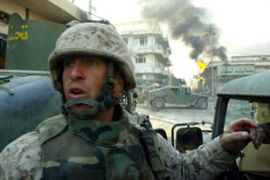Bloody month for US troops in Iraq
US forces consider local ceasefires after worst month since November 2004.

| Your Views |
|
“Let the people of Iraq vote if they want the US to stay or leave” Bob Kaye, Bohemia, US |
In the western province of Anbar, tribal leaders have turned on al-Qaeda in Iraq.
‘Tough month’
Brigadier-General Perry Wiggins, deputy director of regional operations with the US joint chiefs of staff, admitted on Wednesday that May had been “a tough month”.
He said: “We’re moving into places where we haven’t been, not necessarily before.”
Another soldier was killed earlier this week by a roadside bomb northwest of the capital, and a US soldier died of “non-battle related causes,” the military announced on Thursday.
Troop ‘surge’
| “We have not made the progress that I think is necessary yet, but I hope over the summer that we will continue to make progress” Lieutenant-General Raymond Odierno |
Under this plan, US and Iraqi troops are basing themselves in exposed patrol bases in order to control Baghdad street by street.
“But it is still down from what it was when we started this surge operation in January in Baghdad. There are some positive signs.
Falluja bombing
Odierno’s remarks came against a backdrop of continued violence. On Thursdsay, in the central Iraqi city of Falluja at least 20 people were killed and another 20 wounded by a suicide bomber, a hospital source said.